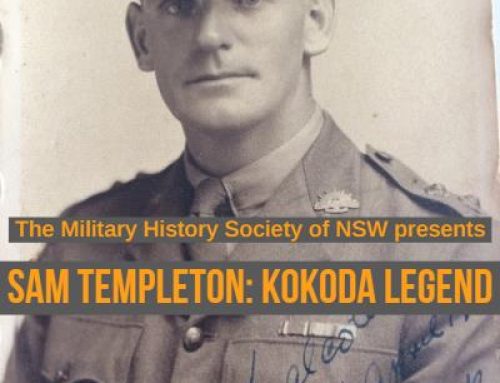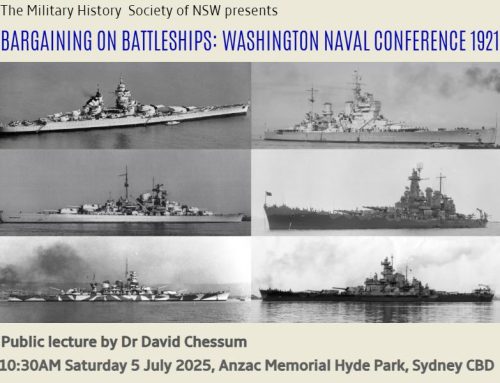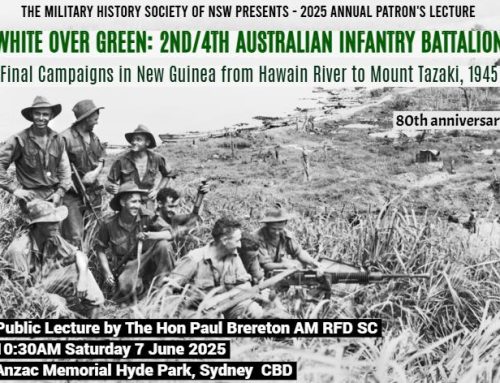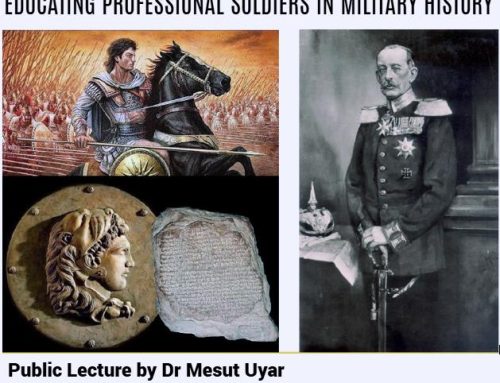Special Operations Executive (Force 136), Malaya, 1943-45
A Lecture by Kate Reid Smith
 Force 136 was a small unit that operated as part of the British Special Operations Executive (SOE) in the Far East during World War II. Its primary mission mandate was behind-the-lines training of local populations in anti-Japanese guerrilla warfare. The secondary focus was on intelligence gathering, sabotage and subterfuge against the Imperial Japanese Forces.
Force 136 was a small unit that operated as part of the British Special Operations Executive (SOE) in the Far East during World War II. Its primary mission mandate was behind-the-lines training of local populations in anti-Japanese guerrilla warfare. The secondary focus was on intelligence gathering, sabotage and subterfuge against the Imperial Japanese Forces.
SOE had been operating an irregular warfare school in Singapore since August 1941. One of the instructors, Captain Freddie Spencer Chapman, had long argued that any successful stay-behind operation in Malaya needed to include local Indian, Malay and Chinese populations. Despite a looming threatened Japanese invasion, British complacency centred around almost fanatical belief in the ‘impregnable’ Fortress Singapore strategy. By the time Japan’s blitzkreig occupation across Southeast Asia had become a fait accompli, Britain was scrambling to bring Force 136 operations into reality sooner rather than later. Delays in recruiting Malay and Chinese operatives meant it was not until May 1943 that the first operation, led by former police officer now Army Captain John Davis, arrived off Pangkor Island (Malaya).
This presentation highlights how operational aspects of little-known Force 136, in what has often been deemed the ‘scratch’ end of SOE wartime operations, depended heavily on a combination of successful multinational operational teams and patronage of their in-country hosts for their success. This included in situ support from anti-Japanese elements such as the Malayan Communist Party; Malay counterparts including Malaysia’s later first Prime Minister, Tunku Abdul
Rahman, and fifth Chief of Defence Force, Ibrahim Ismail; Chinese recruits including Lim Bo Seng and Tan Chong Tee; and Canadian-Chinese radio operators, who played an overlooked role in Force 136 operations.
About the Presenter
 Kate Reid Smith is a former military intelligence officer now military intelligence historian. A polymath graduate including from Oxford and the Australian National Universities, her specialised research focus is uncovering, investigating and bringing to light hidden Southeast Asian World War Two military and intelligence history. An ADF Language School graduate, Kate speaks Mandarin Chinese and has some working knowledge of other regional languages including Indonesian and Malay, which she finds invaluable when uncovering alternative perspectives to shared wartime events.
Kate Reid Smith is a former military intelligence officer now military intelligence historian. A polymath graduate including from Oxford and the Australian National Universities, her specialised research focus is uncovering, investigating and bringing to light hidden Southeast Asian World War Two military and intelligence history. An ADF Language School graduate, Kate speaks Mandarin Chinese and has some working knowledge of other regional languages including Indonesian and Malay, which she finds invaluable when uncovering alternative perspectives to shared wartime events.
Kate has published various articles, including most recently “January 1944: Imperial Japan’s ‘Naval Invasion’ of Western Australia” (Naval Historical Review, March 2022), and “Australia’s Search for Maritime Self-Defence: AUKUS Historical Conventional Inheritance or Regional Nuclear Obeisance?” (November 2021). Her latest book review is of Semut: The Untold Story of a Secret Australian Operation in WWII Borneo by Christine Helliwell (forthcoming Australian History Association). At the invitation of Professor Peter Stanley, formerly director of the Australian War Memorial and now Professor of Military Studies at the Australian Defence Force Academy, Kate presented a webinar about her work on Secret Intelligence Australia (SIA), the MI6 outpost during World War II, resulting in the largest webinar audience for 2021. Her most recent interview was on the “Thanksforyourservice Podcast” into her ongoing research centred around MI6 in Australia during World War II, and the Kampong Toh Massacre in Southern Thailand in December 1941 (both books forthcoming). She is often an invited guest speaker at various events, and some recent examples of her public events in 2022 (Covid willing) include not only this presentation “Resisting Japanese Occupation: Special Operations Executive Far East (F136) Malaysia 1943- 1945” for the Military History Society of New South Wales (Sydney), but also “Secret Amphibious Warfare – Australia’s World War Two Beach Intelligence Operations” for the HMAS Sydney Association (forthcoming Canberra). Her most recent strategic consultancy was for the US-Australian Government backed 2022 Policy Review into the Australian-US Alliance.
Kate has lived, worked and travelled extensively in and around Southeast Asia. She now finds herself with a travel addiction of purposefully stumbling upon old wartime-related books, stories and photographs, and has turned into a bit of a snob about laksa. She writes in the witching hours which suit her best, then spends the rest of the day trying to impress her wayward cat named Calico, that she does not own Kate’s writing desk.





